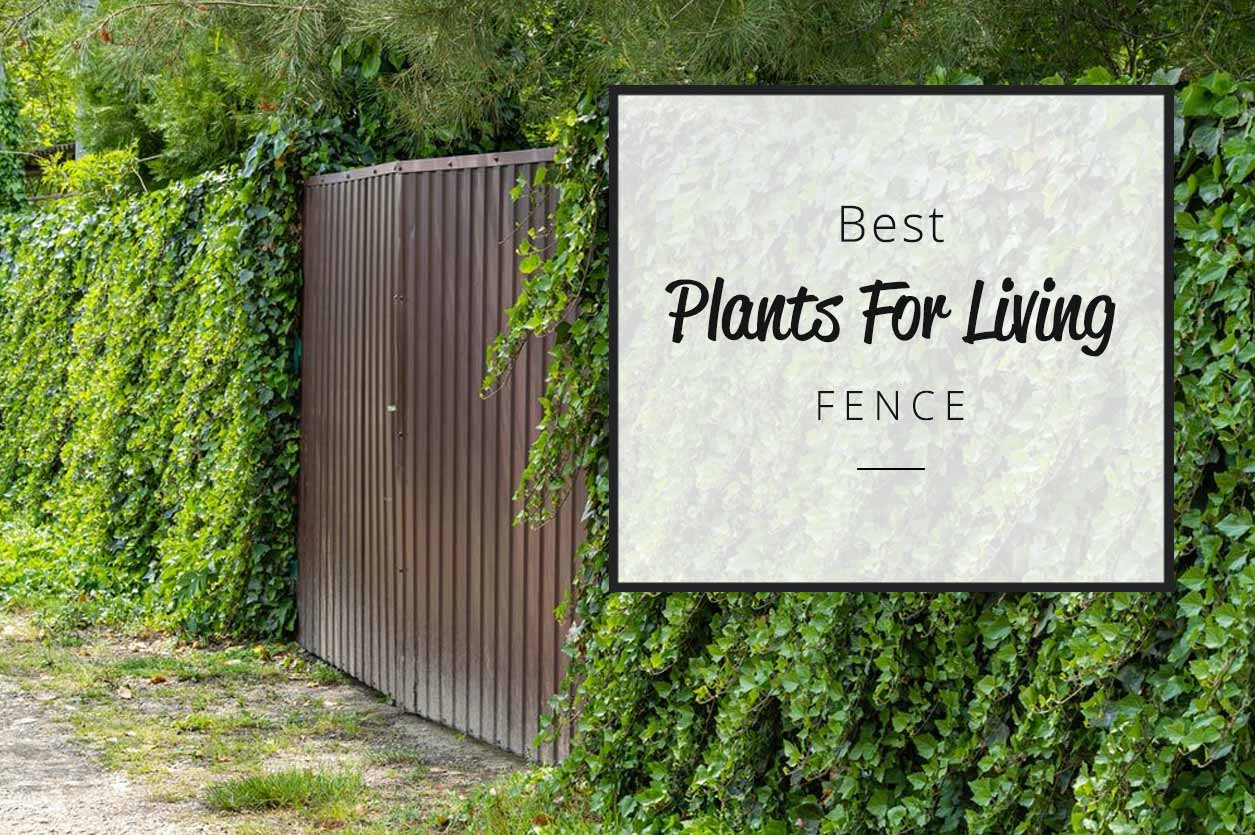
Have you ever walked by a fence made out of plants? Well, that is commonly referred to as a “living fence.” Living fences are usually made of tall plants planted close together, either alone or supported by building materials. They grow close together and create a dense growth that serves as a fence.
Some of the best plants for living fences include Lilacs, Weeping Willow, Euonymus, Laurel, Hicks Yew, Juniper, etc. These plants can be trees, shrubs, vines, bushes, etc. Living fences are an excellent way to add greenery to a house, especially if you don’t have a proper garden. Many of these plants are low-maintenance and provide homeowners with a beautiful and unique fence.
The characteristics and features of these plants are detailed below. Read on to learn more.
10 best plants for living fence
Many plants can be used for living fences. These plants can be used in combinations or alone. Some produce flowers, some are evergreen, some only grow in full sunlight and some can survive low temperatures.
The type of plant that best suits a home will depend on many factors. Here are some of the best plants that can be used to make living fences.
1. Lilacs

- Plant type; Shrub
- Average Size at maturity; 12 to 15 feet tall and 10 to 12 feet wide.
- Best growing conditions; Lilacs grow best in full sun and moist, well-drained soil. They are sensitive to pH change and prefer slightly alkaline soils.
- Level of maintenance; lilacs are very low-maintenance and may only require yearly pruning to shape the shrub.
Lilacs are one of the best plants for a living fence. They are relatively fast-growing especially when young and can reach up to a foot within a year. Mature lilacs can grow up to 12 to 15 feet tall and 10 to 12 feet wide. They make very beautiful and ornamental living fences and brighten up a home when they bloom and produce lilac-colored flowers that have very pleasant scents.
Depending on where you live, and the lilac variety present, lilacs can provide color and fragrance from April through June. lilacs grow best in full sunlight and in soils that are slightly alkaline, moist, and well-drained.
2. Bamboo

- Plant type; Grass
- Average Size at maturity; depends on the variety. Some can grow as short as 4ft while others are as tall as 100ft.
- Best growing conditions; bamboo grows best in indirect sunlight, tropical-like temperatures of 65–95°F (18–35°C). They also grow well in moist soil with good drainage.
- Level of maintenance; low maintenance. However, make sure to monitor their growth to prevent the invasion that some species exhibit.
Bamboos are one of the best plants for a living fence. They are fast-growing, durable, and low-maintenance. Although mistaken as trees, bamboos are grass albeit modified. Bamboo plants can grow up to 50 ft or as short as 4 ft depending on the variety.
They grow well in indirect sunlight in warm atmospheres. If you live in a cold area, consider an evergreen bamboo that will be able to withstand the low temperatures. Make sure to keep an eye on the bamboo plants to stop any invasion of the plant outside of the fence.
3. Weeping Willow
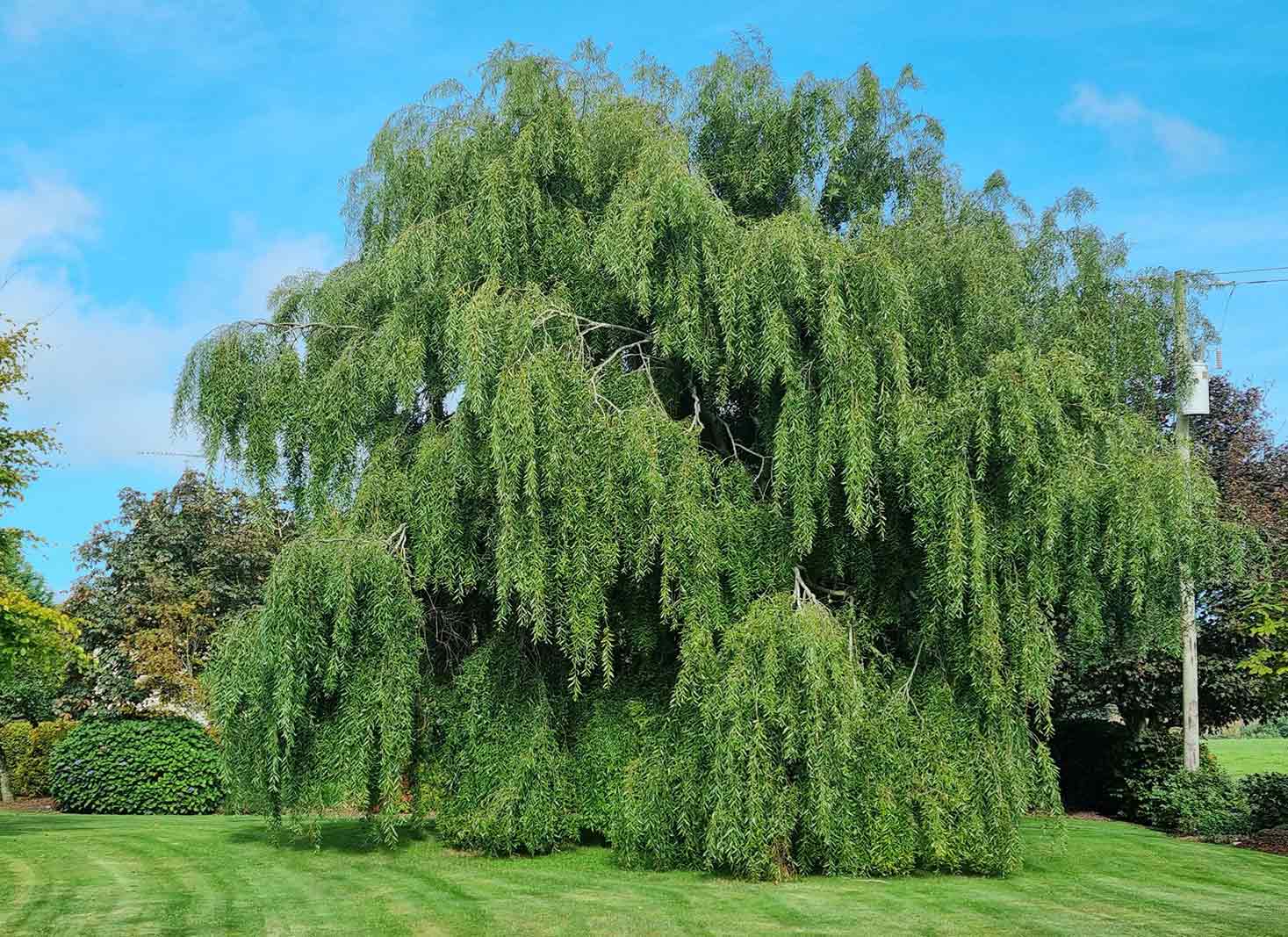
- Plant type; Tree
- Average Size at maturity; 35–50 ft. tall, 5–50 ft. wide
- Best growing conditions; weeping willow grows well in partial to full sunlight. It also grows well in acidic or alkaline, loamy, clay, or sandy soils as long as it is moist, rich, and well-drained. It grows well near water but has some drought tolerance.
- Level of maintenance; high maintenance. They are prone to diseases and insect infestations.
The weeping willow is one of the best plants for a living fence. The tree has large spreading branches and can be planted so two intertwines cause passage while providing a fence. They grow quickly and can reach up to 35–50 ft. tall, and 5–50 ft. wide.
The tree however has a short life span of 30 to 50 years depending on the level of care it received during its lifetime. They grow well in full to partial sunlight and in both acidic and alkaline loam, clay, or sandy soil that is moist, rich, and well-drained.
4. Yew Plant
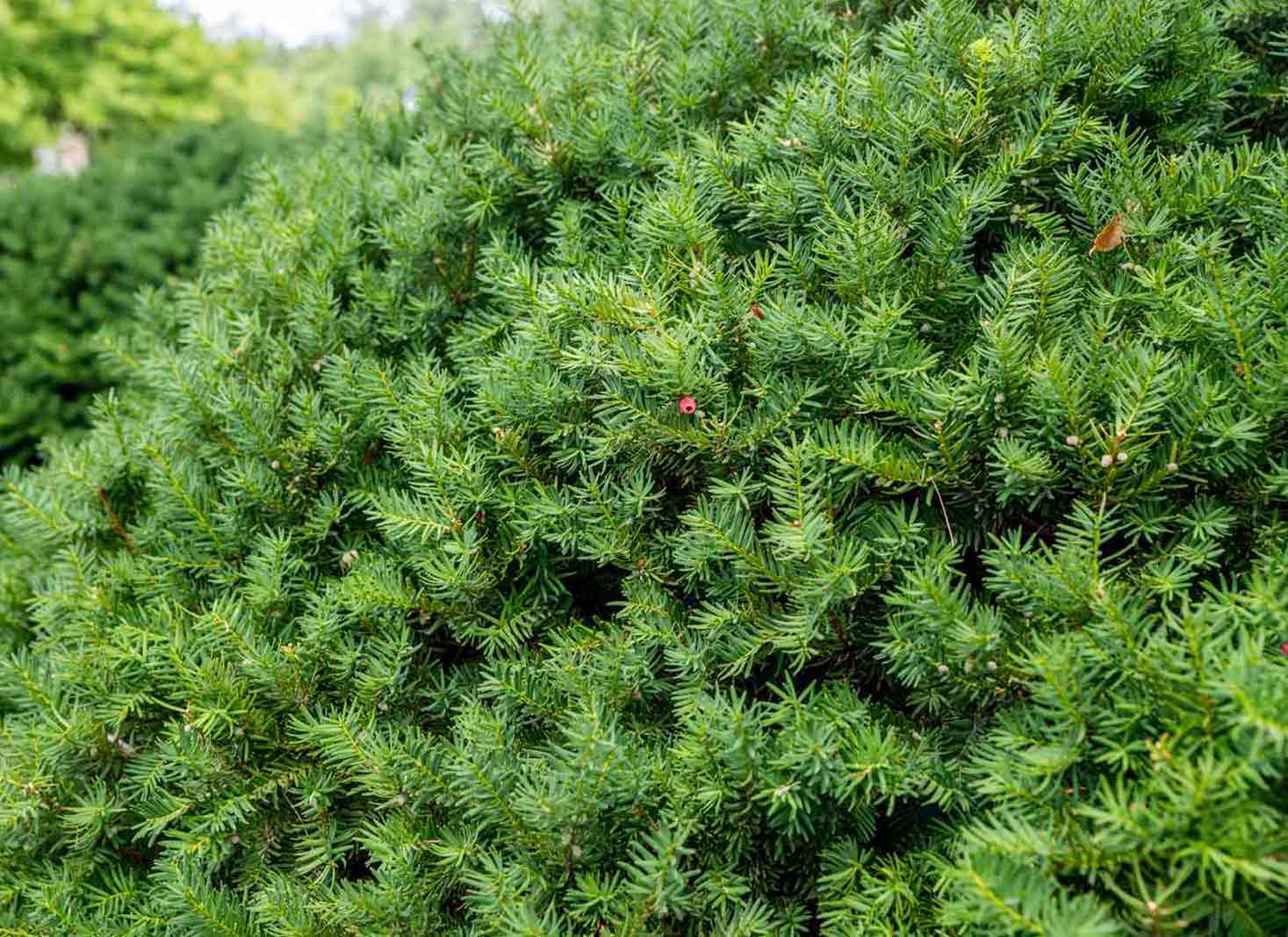
- Plant type; Shrubs
- Average Size at maturity; 8 ft to 12 ft tall with a width of 4 to 20 ft.
- Best growing conditions; Yews grow best in humus-rich soil that has excellent drainage. Fertilize yews in spring with a layer of compost and an evergreen shrub fertilizer. Make sure to keep young yews watered for maximum growth
- Level of maintenance; high maintenance. Parts of the yew shrub are harmful when consumed so keep kids and pets away.
Yew is one of the best plants for living fences. They are relatively fast-growing and they grow thick and dense. The plant is an evergreen and this accounts for the yew plant’s ability to do well in cold regions. The female yew trees have highly poisonous berries that need to be kept out of reach of children and pets.
Young growing yew plants should be bought and watered regularly to facilitate growth. Yew plants grow the best humus-rich soil that has excellent drainage. Fertilize yews in spring with a layer of compost and an evergreen shrub fertilizer.
5. Holly

- Plant type; trees and shrubs
- Average Size at maturity; 30-50 feet
- Best growing conditions; holly grows well in full sun or under light shade. They need moist, well-drained soil, enriched with organic matter. They will grow in most soil types except solid chalk.
- Level of maintenance; medium maintenance for young plants and low maintenance for mature and established plants.
Holly is one of the best plants for living fences. They can be planted as trees or shrubs and are a very traditional choice for living fences. The Holly plant produces uniquely shaped leaves with sharp edges and bright red berries which add a pop of color to the greenery.
The Holly plant is also used for medicinal purposes although the berries are not edible and may cause harm to humans and pets. The holly plant may largely be associated with Christmas and its festivities, however, they are a great choice for a living fence. You can decide to go with holly shrubs or trees depending on your needs.
6. Privet
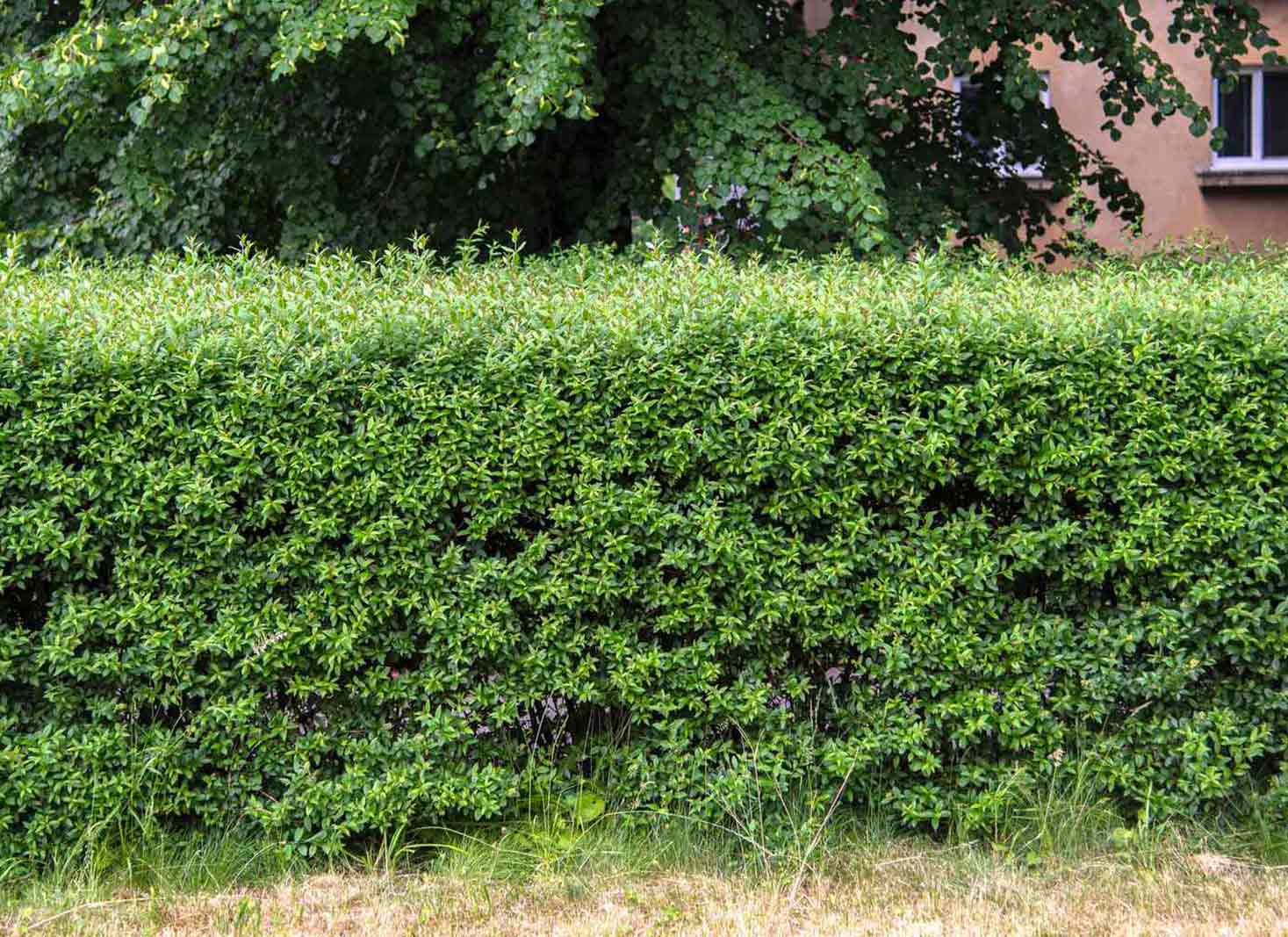
- Plant type; shrubs, trees
- Average Size at maturity; for shrubs; 8 to 20 feet tall. For trees; 35 to 40 feet in height and 5 to 10 feet wide.
- Best growing conditions; private plants grow in all well-drained soils. For best foliage density and flowering, sunlight exposure for 4 to 5 hours is recommended.
- Level of maintenance; low-maintenance once established.
Privet is one of the best plants for living fences. They are fast-growing plants that can create a dense, long-lasting hedge with a mature height and spread. Private plants come in the form of shrubs and trees. The shrubs can grow 8 to 20 feet when mature while the trees are twice as tall at 35 to 40 feet on maturity.
The private plant is very easy to handle and requires little to no knowledge of gardening. They can handle most growing conditions and are low-maintenance once established making them a good choice for many homes.
7. Arborvitae (Thuja)

- Plant type; Tree
- Average Size at maturity; 50-60 feet tall and 12-20 feet wide.
- Best growing conditions; Arborvitaes do best in well-drained soil that is moist, rich, and deep. It also grows well in the soil with a pH of 6.0 to 8.0, full sunlight exposure or partial shade, and high humidity.
- Level of maintenance; moderate maintenance
Arborvitae (Thuja) is one of the best plants for living fences. They are tall and narrow evergreen trees that can be used for different designs in landscaping e.g in making living fences. Arborvitae plants require a fair bit of maintenance especially when young. Young plants require daily watering to keep the soil moist and the plant hydrated.
Arborvitae (Thuja) plants can grow to 50-60 feet although there are shorter and more manageable species available. They do well in moist but well-drained soil that is slightly acidic and alkaline. Full exposure to sunlight is preferred although they will still grow under partial shade.
8. Euonymus
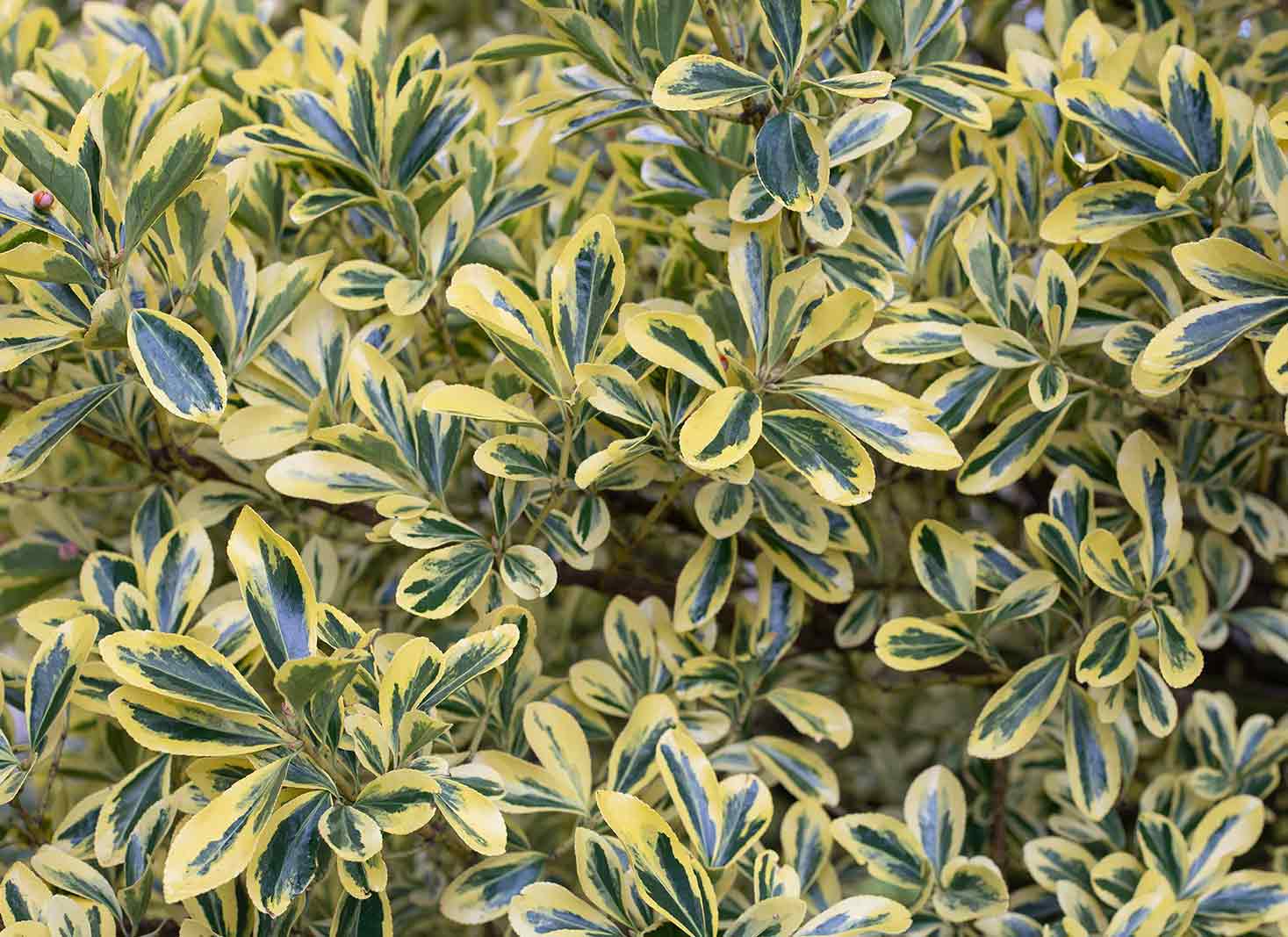
- Plant type; dwarf shrubs, vines, and tall trees
- Average Size at maturity; 10 to 15 feet high and 5 to 7 feet in width
- Best growing conditions; Euonymus grows well in well-drained soil, full sun exposure, and partial shade, although the variegated varieties do better with more sun.
- Level of maintenance; low maintenance
Euonymus is one of the best plants for living fences. They are well-known for their gold and green foliage and adaptability. The tough evergreens grow well in well-drained soil, full sun exposure, and partial shade, although the variegated varieties do better with more sun. They will tolerate less-than-ideal soils, exposed areas, windy corners, and a fair shade.
For more ideas besides trees for a living fence, see our article here.
9. English/cherry Laurel
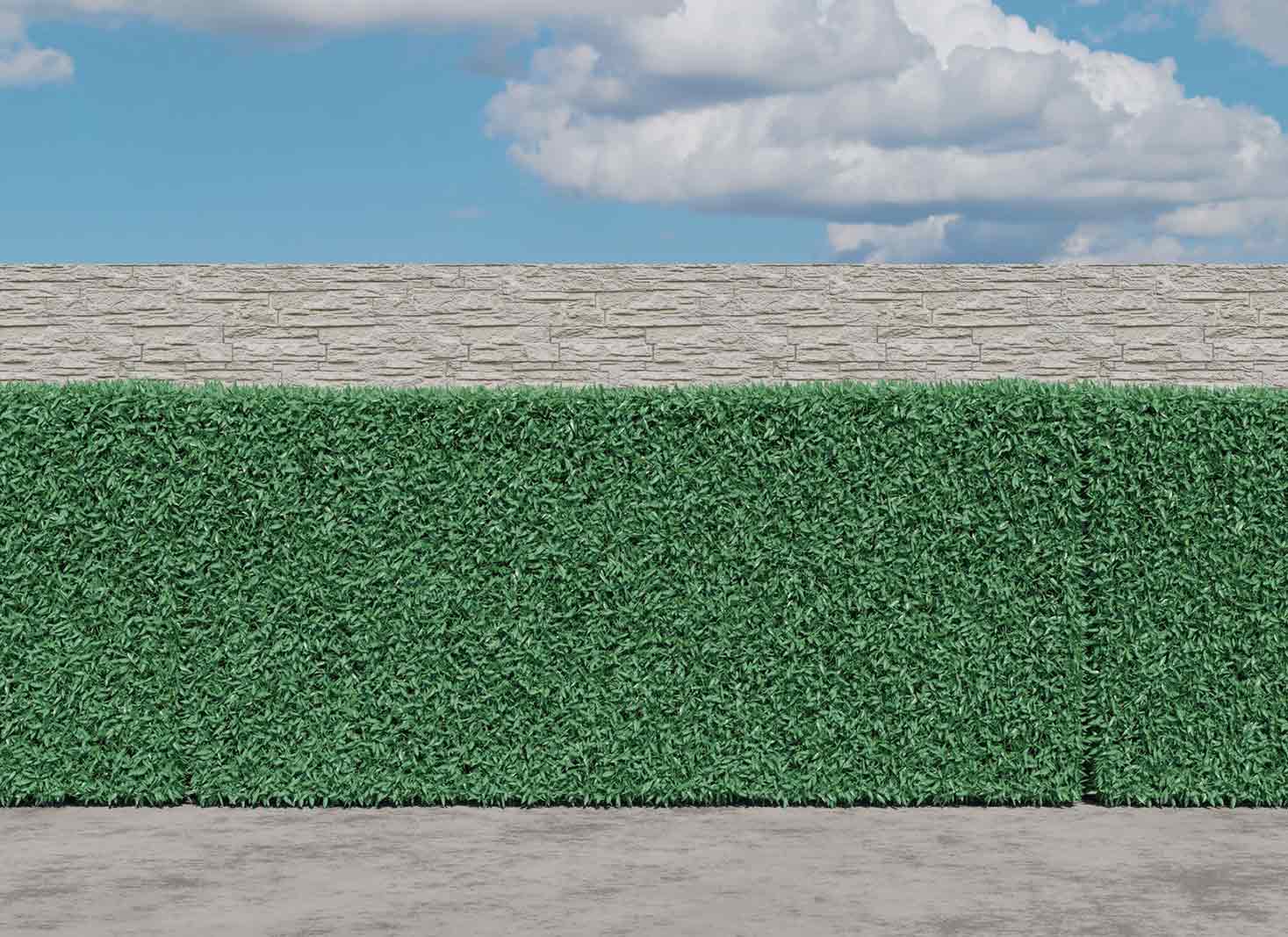
- Plant type; small tree, large shrubs
- Average Size at maturity; 20 feet tall and 6 to 10 feet wide.
- Best growing conditions; English/cherry laurels grow well in moist soil with good drainage and are rich in organic matter. It tolerates all light conditions from full sun to partial and even full shade, preferring more sun in cool climates and more shade in warmer areas.
- Level of maintenance; low-maintenance.
The English laurel is one of the best plants for living fences. It is also known as the cherry laurel, a large evergreen shrub or small tree. The plant is a fast-growing, dense evergreen plant that makes a good privacy fence. This is especially handy if you want to cover up an ugly fence quickly.
English or cherry laurels grow about 1 to 2 feet year,ly so you will be sure to have a proper privacy fence in no time. They grow well under all sorts of light conditions but require moist, well-drained soil rich in organic matter to grow properly.
10. Juniper
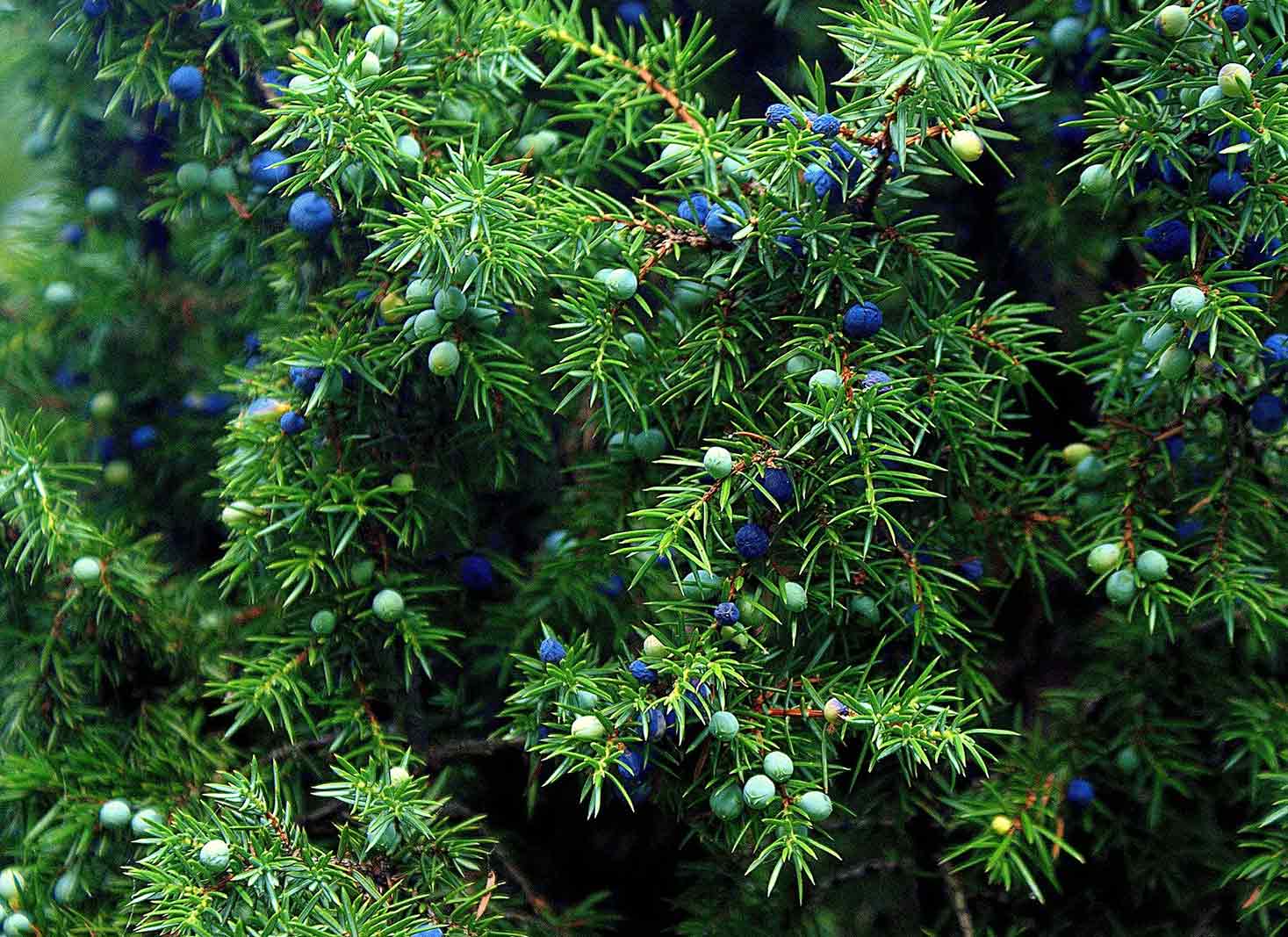
- Plant type; coniferous trees and shrubs
- Average Size at maturity; 4 inches to 50 feet tall and 6 to 20 feet wide depending on the species.
- Best growing conditions; junipers grow well in full sun or light shade.
- Level of maintenance; little to no maintenance.
Juniper is one of the best plants for living fences. They are coniferous trees and shrubs. They are very unique plants to have in your garden and will require little to no maintenance. Junipers have the capacity to self-prune, shedding branches for survival, and their sap is rot-resistant.
Junipers provide beauty, privacy, and a nice fragrance all in one. Junipers grow well in full sun or light shade with well-drained soils. Although some species can be grown in full shade, most junipers will become more open and leggier if they don’t get enough sun.






